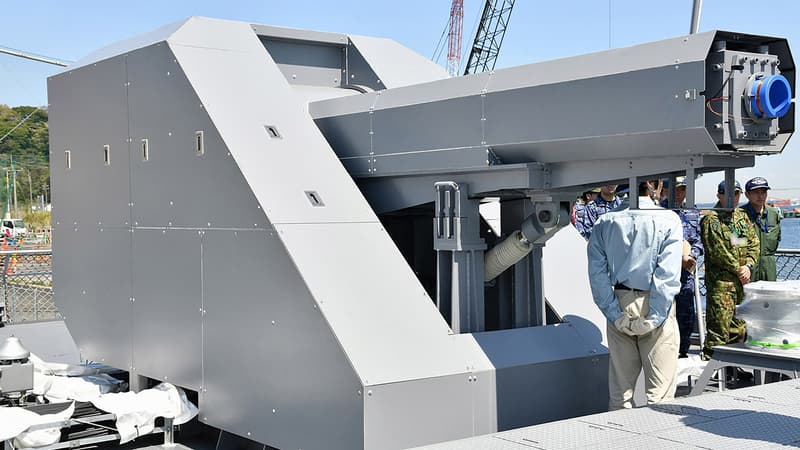Japan has presented a futuristic model of “electric cannon” in the largest Japanese defense show held this week. Material that your designers hope to use to reduce hypersonic missiles.
Instead of using barrel powder to draw an artillery housing, technology uses electromagnetic energy to launch a projectile along a set of rails at a very high speed, more than 200 m/s output.
The shell should, in theory, destroy its goal, that it could be a ship, a drone or a ballistic missile, only with its immense kinetic energy instead of explosives.
New Generation Technology
Other countries, including the United States, China, France and Germany, also develop this technology, but the Japanese Navy claimed a world premiere last year when trying an electric cannon on a ship.
“Electric barrel is a weapon of the future that attracts projectiles with electricity, unlike conventional artillery,” a technology, logistics and acquisition manager (ATLA) of the Ministry of the Japanese Ministry of Defense told AFP.
The electromagnetic cannon project developed by France is led by the Franco-German Institute for Research in Saint-Louis. Called Railgun, it could be integrated into the buildings of the French Navy.
The Defense Innovation Agency indicates that this technology makes it possible to extend the shooting range (more than 200 kilometers) and improve the defense and anti -aircraft, due to the speed of the impact. The absence of an explosive load also makes possible more ammunition.
France and Japan, as well as Germany, recently approached in the field of the Electromagnetic Canyon: the three defense ministries signed in May 2024 a cooperation agreement to “facilitate the exchange of information and explore the possibilities of collaboration,” said Japan’s Embassia in France in its X account.
Japanese ambitions
The Dsei Japan Defense Fair, which is held from Wednesday to Friday, opens when Japan adopts a more proactive defense policy and seeks to sell more military teams to other countries.
Currently, the Japanese of Mitsubishi Heavy Industries (MHI) and the Germans of Thyssen Krupp Marine Systems (TKMS) are competing for an important contract to provide the Australian navy for new warships.
Winning the “Sea 3000” project of several billions of dollars to provide Australia Fragas for the largest military export contract in Japan since the war, according to Japanese media.
Source: BFM TV


